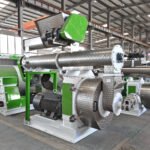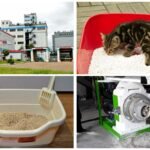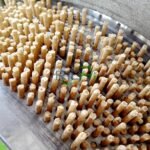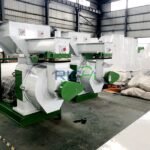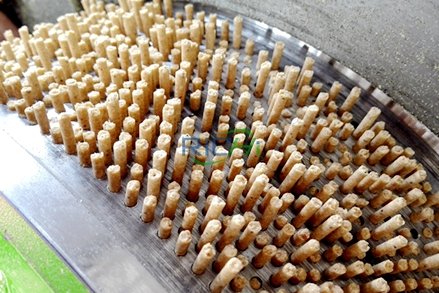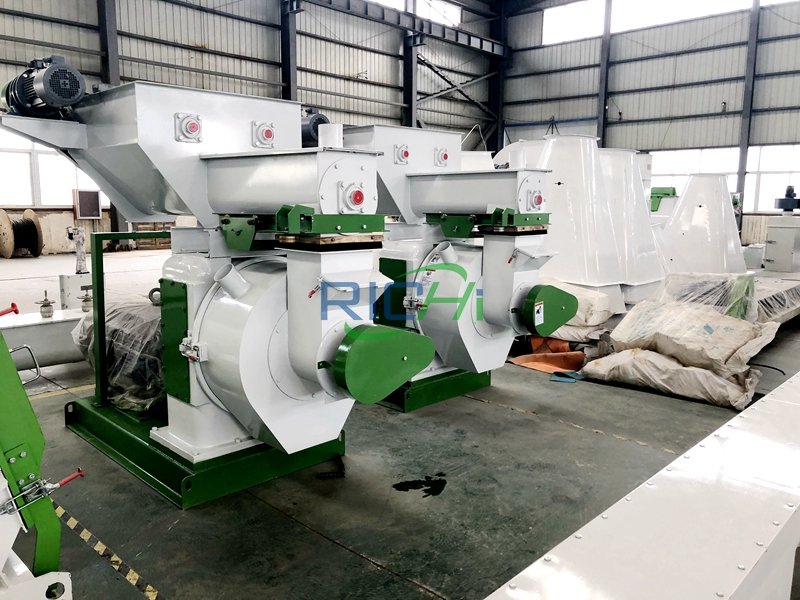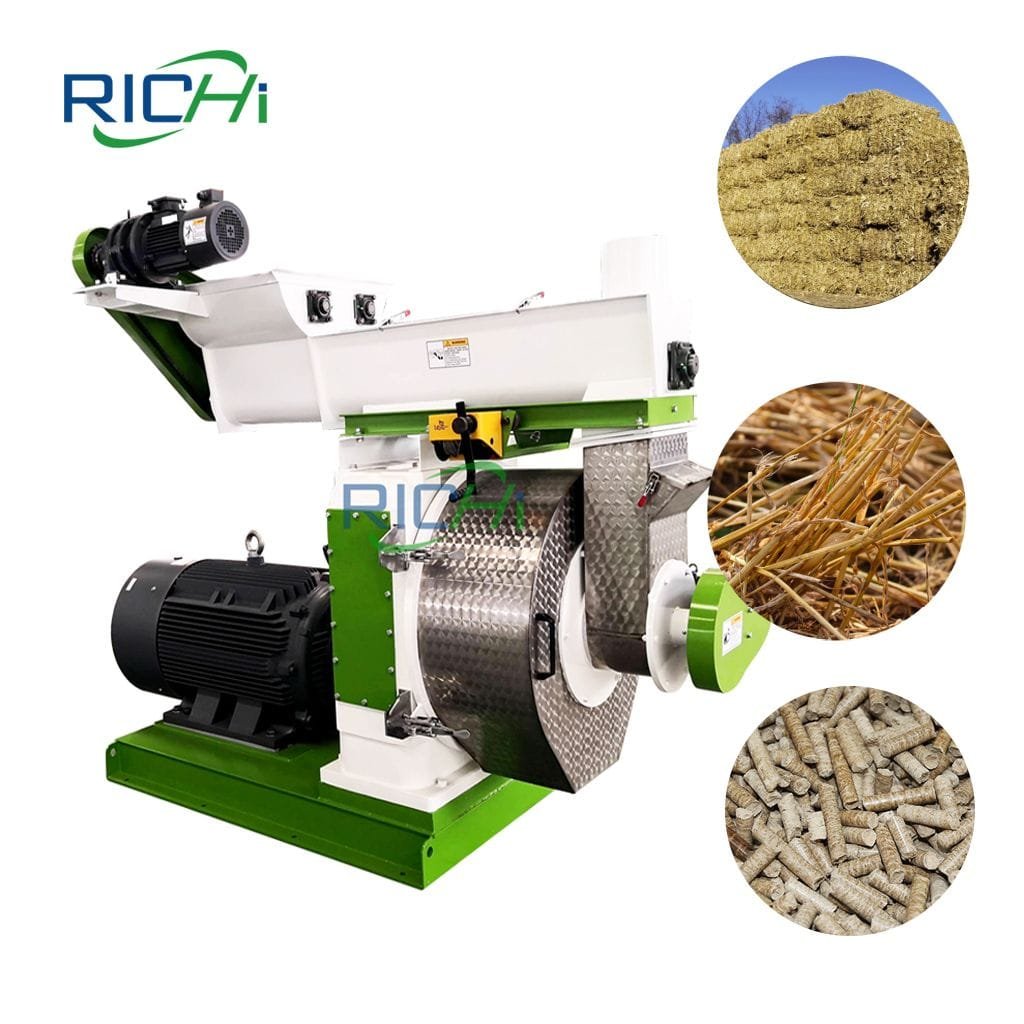Introduction to Cow Dung Pellet Making Machine
Cow dung pellet making machine is a revolutionary invention that has transformed the way organic fertilizer is produced. It offers a sustainable and efficient solution for farmers and gardeners to convert cow dung into high-quality pellets that can be used as organic fertilizer or fuel.
This machine not only helps in waste management but also contributes to environmental preservation. In this article, we will explore the benefits of using a cow dung pellet making machine, understand its working mechanism, and discuss the materials required for making cow dung pellets.
Related post: https://richipelletizer.com/cow-dung-pellet-making-machine/

Benefits of Using a Cow Dung Pellet Making Machine
Using a cow dung pellet making machine offers numerous benefits to farmers, gardeners, and the environment.
- Firstly, it helps in efficient waste management by converting cow dung, which is otherwise considered a waste product, into a valuable resource. This reduces the environmental pollution caused by the accumulation of cow dung.
- Secondly, cow dung pellets are a rich source of organic nutrients, making them an excellent fertilizer for plants. These pellets provide a slow-release of nutrients, ensuring a steady and consistent supply for plant growth.
- Additionally, cow dung pellets improve soil structure, water retention, and promote healthy microbial activity in the soil.
Understanding the Working Mechanism of the Machine
A cow dung pellet making machine works on the principle of compressing and extruding cow dung into cylindrical pellets. The machine consists of a feeder, a mixing chamber, a pellet press, and a cooling unit. Initially, cow dung and other organic materials are mixed in the chamber, ensuring a homogeneous mixture.
This mixture is then fed into the pellet press, where it is subjected to high pressure and heat. The pressure and heat help in binding the materials together, forming pellets. Finally, the pellets are cooled down and collected for storage or further processing.
Materials Required for Making Cow Dung Pellets
To make high-quality cow dung pellets, certain materials are required. The primary material is cow dung, which should be properly decomposed and dried to eliminate any harmful pathogens or weed seeds.
Apart from cow dung, other organic materials such as crop residues, straw, or agricultural waste can be added to enhance the nutrient content of the pellets. These materials should be finely chopped or shredded before being mixed with cow dung. It is essential to maintain the correct ratio of cow dung to other materials to ensure the nutritional balance in the pellets.
Step-by-Step Guide to Operating the Pellet Making Machine
Operating a cow dung pellet making machine requires adherence to a specific set of steps.
- Firstly, ensure that the machine is properly set up and all safety measures are in place.
- Next, feed the organic materials into the mixing chamber, making sure to maintain the correct ratio.
- Once the materials are mixed, transfer the mixture to the pellet press.
- Adjust the temperature and pressure settings according to the required pellet density.
- Start the machine and allow it to run until the pellets are formed.
- Finally, collect the pellets and cool them down before storage or further processing.
Quality Assurance and Safety Measures for Users
- To ensure the production of high-quality cow dung pellets, it is essential to adhere to quality assurance and safety measures.
- Regular maintenance and cleaning of the machine are crucial to prevent any contamination or malfunction.
- Additionally, proper safety gear should be worn during operation to protect against any potential hazards.
- The raw materials used should be of good quality and free from any contaminants. It is also advisable to regularly test the pellets for their nutrient content and physical properties to maintain consistent quality.
Commercial Viability of Cow Dung Pellet Production
The production of cow dung pellets has gained significant commercial viability due to various factors. Firstly, there is a growing demand for organic fertilizers in the agriculture and horticulture sectors, driven by increased awareness of environmental sustainability.
Cow dung pellets offer a natural and eco-friendly alternative to chemical fertilizers. Secondly, the availability of cow dung as a raw material is abundant, especially in areas with a high concentration of livestock farming. This makes cow dung pellet production a profitable venture, providing a sustainable source of income for farmers.
Comparing Cow Dung Pellets to Other Organic Fertilizers
When compared to other organic fertilizers, cow dung pellets have several advantages. Firstly, they have a balanced nutrient composition, providing essential elements like nitrogen, phosphorus, and potassium in optimal quantities.
This ensures better plant growth and health. Secondly, the slow-release nature of cow dung pellets allows for a more extended nutrient availability period, reducing the frequency of fertilizer application. Lastly, cow dung pellets improve soil fertility and texture, promoting better water retention and minimizing nutrient leaching.
Overcoming Challenges in Cow Dung Pellet Manufacturing
While cow dung pellet manufacturing offers numerous benefits, there are certain challenges to overcome. One challenge is the availability of a consistent supply of high-quality cow dung. This requires proper management and storage of cow dung to prevent contamination and ensure its nutritional value.
Another challenge is the selection and procurement of suitable organic materials to enhance the nutrient content of the pellets. It is necessary to establish partnerships with local farmers or waste management facilities to overcome these challenges and maintain a consistent supply chain.
Future Innovations and Potential Applications
The pellet machine has immense potential for future innovations and applications. Researchers and engineers continue to explore ways to improve the efficiency and productivity of the machine.
There is also a scope for integrating automation and advanced control systems to optimize the pellet production process. Furthermore, the potential applications of cow dung pellets extend beyond organic fertilizer. They can be used as fuel for heating or cooking, reducing dependency on non-renewable energy sources. The future holds exciting possibilities for the cow dung pellet making machine, contributing to sustainable agriculture and waste management.
The cow dung pellet making machine has revolutionized the way cow dung is utilized, providing an innovative solution for waste management and organic fertilizer production.
By understanding the working mechanism of the machine, utilizing the right materials, and following the necessary steps, farmers and gardeners can efficiently produce high-quality cow dung pellets. The commercial viability of cow dung pellet production, along with the numerous benefits it offers, makes it a promising venture for farmers and a sustainable and eco-friendly choice for agriculture. With ongoing advancements and potential applications, the future of cow dung pellet making machines looks promising in addressing the challenges of waste management and sustainable agriculture.



